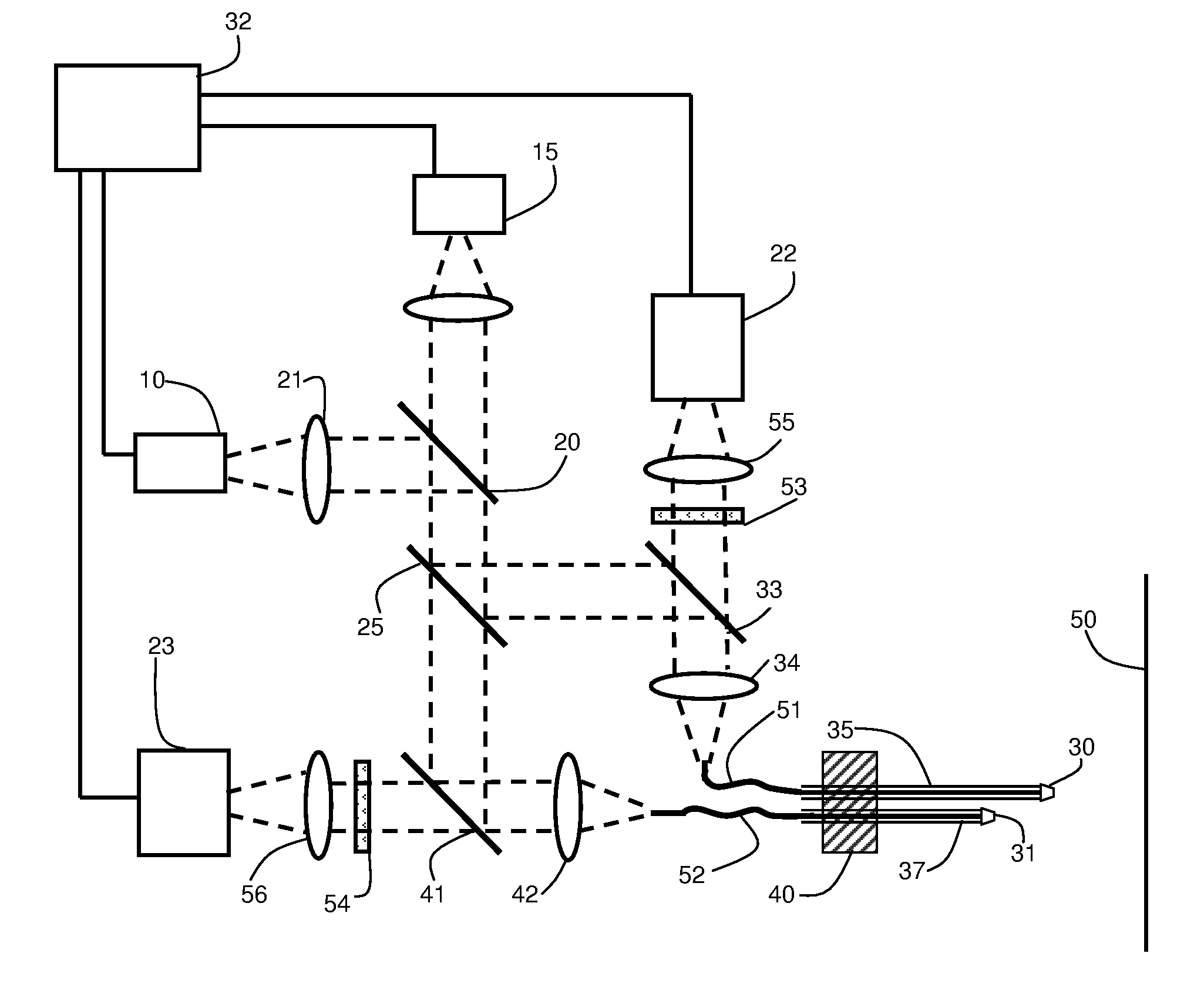Thermally Compensated Dual-Probe Fluorescence Decay Rate Temperature Sensor and Method of Use
a temperature sensor and fluorescence decay rate technology, applied in the field of thermal compensation dualprobe fluorescence decay rate temperature sensor and method of use, can solve the problems of difficult to achieve adequate thermal contact between the contact thermometer and the sample surface to be measured, inapplicable to heat measurement, instruments, etc., and achieve rapid thermal processing. , the effect of high thermal resistan
- Summary
- Abstract
- Description
- Claims
- Application Information
AI Technical Summary
Benefits of technology
Problems solved by technology
Method used
Image
Examples
Embodiment Construction
[0030]In accordance with the present invention is provided a thermally compensated fluorescence decay rate temperature sensor that is capable of measuring the true temperature of a sample surface. In a particular embodiment, the dual-probe FDR sensor is heated utilizing a laser source that causes the phosphor tip to heat up owing to the nonradiative processes experienced by the fluorescent state. The temperature of the phosphor tip of the probes is dependent upon the optical power dissipated at the tip. After the phosphor tips are heated to a predetermined temperature, the phosphors are excited via the optical fiber by a low power source inside the instrument, and the resulting luminescence travels back to a detector. The source and detector, along with signal-processing electronics and control functions are positioned at the near end of the probes and in communication with additional circuitry as required through a fiber-optic connector.
[0031]In accordance with an embodiment of the...
PUM
| Property | Measurement | Unit |
|---|---|---|
| distance | aaaaa | aaaaa |
| fixed separation distance | aaaaa | aaaaa |
| separation distance | aaaaa | aaaaa |
Abstract
Description
Claims
Application Information
 Login to View More
Login to View More - R&D
- Intellectual Property
- Life Sciences
- Materials
- Tech Scout
- Unparalleled Data Quality
- Higher Quality Content
- 60% Fewer Hallucinations
Browse by: Latest US Patents, China's latest patents, Technical Efficacy Thesaurus, Application Domain, Technology Topic, Popular Technical Reports.
© 2025 PatSnap. All rights reserved.Legal|Privacy policy|Modern Slavery Act Transparency Statement|Sitemap|About US| Contact US: help@patsnap.com



